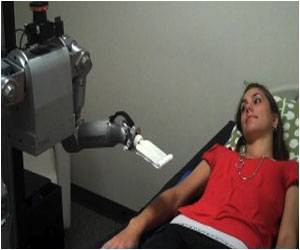Diagnosing Chronic Fatigue Syndrome (CFS) might soon be simpler and smarter, thanks to groundbreaking muscle and electrical analysis techniques.

- Elevated oxidative stress in muscle tissue may explain chronic fatigue in chronic fatigue syndrome (CFS) and long COVID patients
- Electrical properties of muscle stem cells offer a potential non-invasive, cost-effective diagnostic tool for CFS
- A multidisciplinary approach reveals molecular, cellular, and electrical insights into CFS, paving the way for innovative treatments
Chronic fatigue syndrome (CFS) is a complex, long-term illness marked by excessive exhaustion that does not improve with rest and can worsen with physical activity. The tiredness is severe enough to impair a person’s ability to perform daily tasks such as cooking, showering, and even dressing. Muscle pain, joint pain, cognitive troubles, headaches, sleep problems, and sensitivity to light or sound are some of the additional symptoms.
The Centers for Disease Control and Prevention believe that CFS affects 3.3 million people in the United States, although there is no known cause or cure. There is no specific diagnostic test.
Advertisement
Unraveling Muscle Clues to Diagnose Chronic Fatigue Syndrome and Long COVID
“It’s a mysterious disease,” says Lehigh University researcher Xuanhong Cheng, a professor of bioengineering and materials science and engineering at the P.C. Rossin College of Engineering and Applied Science. “There are no single biological indicators that can be used to diagnose chronic fatigue syndrome, and so doctors are forced to diagnose individuals by ruling out other symptoms and conditions.”
Cheng is a member of an international team of researchers who recently received funding from the National Institutes of Health to investigate molecular and cellular changes in muscle tissue, which could lead to improved diagnostic tools and therapeutic options for CFS and related conditions such as long COVID.
“The symptoms of CFS are very similar to that of long COVID,” according to Cheng. “Muscle discomfort, however, is a common sign in both disorders. Our collaborator [Tiziana Pietrangelo of Università degli Studi “G. d’Annunzio” Chieti – Pescara, in Italy] has studied CFS for more than a decade, and she’s discovered that people with the disease also have elevated oxidative stress in their muscle tissue, which contributes to why the muscle is so easily overworked.
Advertisement
Electrical Signatures for Cost-Effective Diagnosis of Chronic Fatigue Syndrome (CFS)
The team is using a multidisciplinary approach to see if there are biological signs within the muscle that may be utilized to diagnose- and possibly treat- people with these disorders.
Pietrangelo will investigate the physiology of skeletal muscle tissue and muscle stem cells, as well as how oxidative stress may influence their functions. Stefano Cagnin, a professor at the University of Padova in Italy, will investigate gene expression in muscle fibers and muscle stem cells, comparing the results of healthy populations to those of CFS patients, in order to identify molecular abnormalities associated with the disease.
Cheng will investigate the electrical properties of skeletal muscle stem cells. She will use broadband electrical sensing, a tool she co-developed, to evaluate cellular features that could show whether a cell is healthy or unwell.
“We’ll try to see whether those signatures are specific enough for us to diagnose the disease,” she tells me.
Advertisement
Multidisciplinary Lens on Skeletal Muscle Stem Cells
Electrical measures may become a significant diagnostic tool because they are simpler and less expensive than molecular analysis. However, the researchers must first determine how these electrical alterations link to underlying molecular problems, which will be disclosed by the work of the other team members.
It’s an innovative approach in various ways.
“When it comes to CFS, researchers have focused on a range of different tissues, organs, and mechanisms, but we’re one of the first teams to look specifically at changes in skeletal muscle stem cells,” Cheng adds. “And we’re using a multidisciplinary approach so we can look at those changes from the molecular level, the subcellular organelle level, and the cellular level.”
By combining their data, the team wants to gain a better understanding of how CFS affects muscles and whether such alterations might be exploited as diagnostic or therapeutic targets.
Non-Invasive Diagnostics and Therapeutic Breakthroughs for Chronic Fatigue Syndrome (CFS)
Cheng’s long-term goal is to develop non-invasive diagnostic methods.
“For example, using an electrode at a certain frequency could allow you to see some kind of abnormal output indicating pathology in their muscle,” she speculates. “This could be used as an indicator for diagnosing CFS.”
Furthermore, by identifying the molecular changes that contribute to the condition, the team intends to someday investigate therapeutic options that may, for example, reduce oxidative stress and ameliorate patients’ symptoms.
While such advancements are still a long way off, any development will be great news for the millions of people who suffer from a condition that has long been misunderstood- and frequently reviled.
“Because CFS has been so poorly understood, the people who have it were sometimes called lazy, or told their symptoms were all in their head,” claims Cheng. “I believe that COVID has, unfortunately, made people more aware that these symptoms are extremely real and can occur following a viral infection. We’re glad to see that shift in attitude, and we’re excited to help these people regain their health.”
References:
- Can electrical signatures help diagnose Chronic Fatigue Syndrome?
(https://www.eurekalert.org/news-releases/1065515)
Source-Medindia



